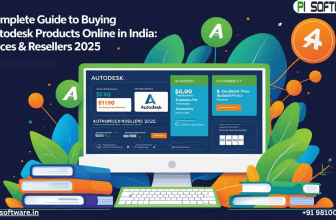Top 10 Graphic Design Software for Designers in 2024

Graphic design is an ever-evolving field, with new tools and technologies continually emerging to meet the needs of designers. As we step into 2024, the landscape of graphic design software is more diverse and influential than ever. Selecting the right software can significantly impact designers’ creativity, efficiency, and overall design quality. Today, we will explore the top 10 graphic design software for 2024, offering detailed insights into their features, benefits, and ideal use cases.
1. Adobe Photoshop
Adobe Photoshop remains the industry standard for raster graphic design. Its robust capabilities for photo editing, digital painting, and graphic creation make it an indispensable tool for designers.
Key Features:
- Advanced photo editing tools
- Layer-based editing
- Extensive brush library for digital painting
- Powerful selection tools
- Integration with other Adobe Creative Cloud apps
Ideal For:
- Photo editing and retouching
- Digital painting and illustration
- Graphic design for print and web
Why Choose Adobe Photoshop: Adobe Photoshop’s comprehensive feature set and continuous updates make it a reliable choice for designers who need versatility and power in their design work.
2. Adobe Illustrator
Adobe Illustrator is the go-to software for vector graphic design. It offers robust tools for creating scalable graphics, logos, and illustrations.
Key Features:
- Precise vector editing tools
- Extensive font and typography options
- Advanced color controls
- Integration with Adobe Creative Cloud
- Export options for various formats
Ideal For:
- Logo design
- Icon creation
- Vector illustrations
- Infographics
Why Choose Adobe Illustrator: Its precision and scalability make Adobe Illustrator essential for designers focusing on vector-based artwork and detailed illustrations.
3. CorelDRAW Graphics Suite
CorelDRAW Graphics Suite is a comprehensive design package that combines vector illustration, photo editing, and typography tools in one application.
Key Features:
- Intuitive vector illustration tools
- Powerful photo editing capabilities
- Extensive font management
- Collaborative tools for team projects
- AI-powered image enhancements
Ideal For:
- Branding and marketing materials
- Illustration and fine art
- Technical drawings
- Layout design
Why Choose CorelDRAW: CorelDRAW’s user-friendly interface and powerful toolset make it a favorite among designers who need a versatile and comprehensive design suite.
4. Affinity Designer
Affinity Designer is a cost-effective alternative to Adobe Illustrator, offering powerful vector and raster design capabilities.
Key Features:
- Seamless switching between vector and raster workspaces
- Real-time performance
- Comprehensive grid and alignment tools
- Extensive export options
- Regular updates and improvements
Ideal For:
- Vector and raster design
- UI/UX design
- Web graphics
- Print design
Why Choose Affinity Designer: Its affordability and professional-grade features make it an excellent alternative for budding and experienced designers.
5. Sketch
Sketch is a vector graphic design tool primarily used for UI/UX design. Its simplicity and focus on screen design make it popular among web and app designers.
Key Features:
- Intuitive vector editing tools
- Extensive plugin ecosystem
- Collaboration and sharing capabilities
- Prototyping and wireframing tools
- Export options for various devices
Ideal For:
- UI/UX design
- Web and mobile app design
- Prototyping and wireframing
- Icon design
Why Choose Sketch: Sketch’s focus on UI/UX design and its robust plugin ecosystem make it a preferred tool for designers working on digital products.
6. Adobe InDesign
Adobe InDesign is the leading software for layout design and desktop publishing. It offers advanced tools for creating professional-quality print and digital publications.
Key Features:
- Precision layout tools
- Advanced typography controls
- Interactive digital publications
- Seamless integration with Adobe Creative Cloud
- Support for multiple page sizes and formats
Ideal For:
- Magazine and newspaper design
- Brochures and flyers
- E-books and digital publications
- Annual reports
Why Choose Adobe InDesign: Adobe InDesign’s powerful layout and typographic capabilities make it essential for designers in print and digital publishing.
7. Procreate
Procreate is a digital painting app designed specifically for the iPad. Its intuitive interface and powerful features make it a favorite among digital artists and illustrators.
Key Features:
- Extensive brush library
- High-resolution canvas options
- Advanced layering system
- Animation and time-lapse recording
- Apple Pencil support
Ideal For:
- Digital painting and illustration
- Concept art
- Storyboarding
- Graphic novels
Why Choose Procreate: Procreate’s intuitive touch interface and powerful painting tools make it an excellent choice for artists who prefer working on a tablet.
8. Figma
Figma is a cloud-based design tool ideal for UI/UX design and collaboration. Its real-time collaboration features make it a powerful tool for teams.
Key Features:
- Vector editing tools
- Real-time collaboration and commenting
- Prototyping and interactive design
- Extensive plugin library
- Cross-platform accessibility
Ideal For:
- UI/UX design
- Web and mobile app design
- Team collaboration
- Prototyping
Why Choose Figma: Figma is the preferred option for teams engaged in digital design projects due to its robust design tools and collaborative capabilities.
9. Gravit Designer
Gravit Designer is a versatile graphic design software that offers vector design tools for various design needs. It’s available as both a web app and a desktop application.
Key Features:
- Vector illustration tools
- Advanced typography options
- Cloud integration for file storage
- Cross-platform compatibility
- Intuitive user interface
Ideal For:
- Vector illustration
- Web graphics
- Print design
- Branding
Why Choose Gravit Designer: Its versatility and cloud integration make Gravit Designer an excellent option for designers who need flexibility in their design work.
10. Canva
Canva is an online design tool that simplifies graphic design for non-designers. Its drag-and-drop interface and extensive template library make it accessible to everyone.
Key Features:
- User-friendly drag-and-drop interface
- Extensive template library
- Stock photos and graphics
- Collaborative design capabilities
- Design tools for social media, print, and web
Ideal For:
- Social media graphics
- Marketing materials
- Presentations
- Print design
Why Choose Canva: Canva’s simplicity and accessibility make it a popular choice among individuals and small enterprises looking to create professional designs without advanced design skills.
Conclusion
Choosing the proper graphic design software is determined by your individual requirements, budget, and the type of projects you work on. Adobe Photoshop and Illustrator remain industry standards, while tools like Affinity Designer and CorelDRAW offer potent alternatives. For UI/UX design, Sketch and Figma provide specialized features that enhance the design process. Procreate is perfect for digital painting, while Canva caters to those seeking simplicity and ease of use.
Each tool mentioned has unique features and benefits, making them suitable for various aspects of graphic design. By understanding the strengths of each software, you can select the best tools to enhance your creativity and productivity in 2024.






